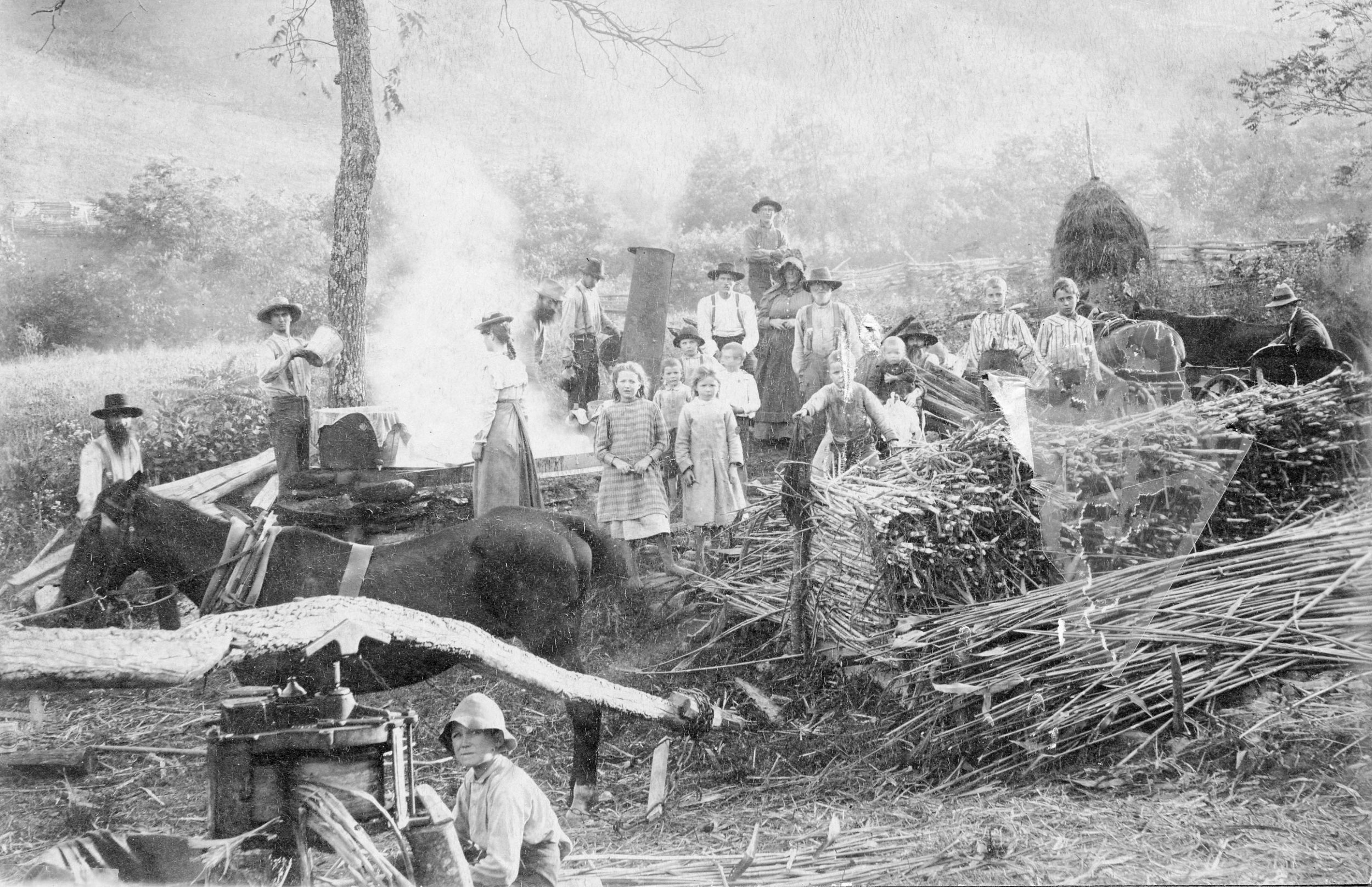Livestock on the Move
It is difficult to wrestle a pig out of a cornfield. More difficult is driving 300 turkeys from Haywood County to market in South Carolina. They roost at 5 p.m. in the trees along the road, no matter what their owners say. In the 1800s this was a familiar scene as farmers across Haywood County and east Tennessee drove their cattle, hogs, sheep, and other livestock towards the Buncombe Turnpike in Asheville and southward along its route for sale. With the arrival of the railroad in 1883 and through the 1930s, Clyde’s stock yards became a key destination. For a time, the bustling town was the largest shipping point for livestock of any depot on the Southern Railway line.
Hogs, cattle, and other livestock were an important part of agriculture in the mountains, whether for sustenance, barter, or sale. Free range grazing of cattle on mountain balds was a common practice while hogs were loosed in the forest to fatten up on acorns and chestnuts. Dairy farms such as Moody’s, Ferguson’s, Osborne’s, and McCracken’s emerged as town folk gradually (and reluctantly) gave up their milk cows and hogs. Today, the county leads the region in the production of beef cattle.
Photograph courtesy of Clarine Best, The Haywood County Library Digital Collection











